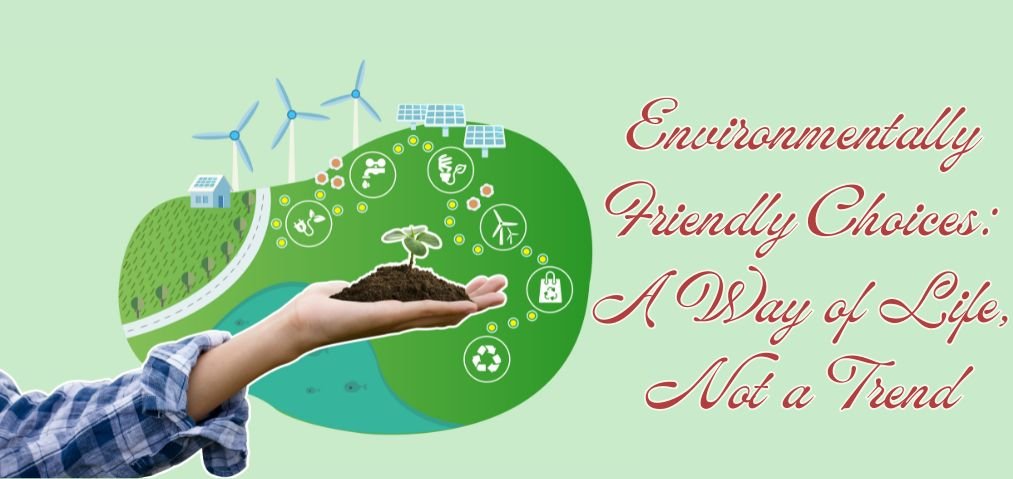Environmentally Friendly ways of living are no longer a choice of lifestyle anymore—now it’s the law. With the specter of global warming, pollution, and diminishing natural resources hanging over the world by the day, the clarion call to go green becomes a snarl that howls louder than ever. “Green” no longer is equal to turning out the lights or recycling—it is the decision we make every day, from what we put in our mouths to how we get around and the brands that we purchase.
Governments, businesses, and households are adopting eco-friendly products and practices to minimize their footprint on the planet. It is not only needed to save the world, but it is also a smart economic, health, and community return on investment in the long run.
Eco-Friendly Home Habits That Pay Dividends
The most crucial place to make a serious change might be in your own home. It requires no huge investment—just wise changes—to construct an eco-friendly home.
Replacing incandescent lighting with LED lighting, using energy-efficient appliances, and installing smart thermostats are good practices to conserve energy. Low-flow showerheads and dual-flush toilets, on the other hand, save water, a dwindling resource globally.
Another most important feature to consider is proper indoor air quality. More environmentally friendly coatings and paints with little to no VOCs are now used by homeowners. Not only do they help lower pollution but also create healthier lungs.
Environmentally Friendly Materials and Green Design
The construction and building world is changing. There is more to building and designing than a matter of steel and glass. Builders and designers look to green materials such as bamboo, recycled steel, reclaimed wood, and cork. They are renewable, biodegradable, and less dependent on virgin resources.
Green design features such as passive solar orientation, natural ventilation, and thermal mass reduce energy costs and enhance comfort levels. More and more of these products are being incorporated by architects in commercial and residential projects.
Sustainable Fashion: The Environmentally Friendly Wardrobe
One of the most polluting industries in the world—yet change is coming. Increasing numbers of fashion labels are choosing to use eco-friendly materials like organic cotton, hemp, and recycled polyester.
Consumers also are adopting practices such as second-hand fashion, quality not quantity, and fair-trade prices. They combined reduce wastage of textiles, have a lower carbon footprint, and improved labor conditions. Green clothing is increasingly a value statement, rather than solely a matter of aesthetics.
Environmentally Friendly Food Systems and Plant-Based Options
What we consume directly adds to the world. Industrial food production is one of the largest causes of greenhouse gas emissions, deforestation, and water consumption.
Green diets are all about the local food system, organic production, and plant-based food. Gradually consuming more plant foods, including more fruits, vegetables, legumes, and grains, and fewer animal foods, can help significantly decrease one’s carbon footprint.
Community gardening, CSA, and food co-ops are on the rise, enabling the buyer to purchase freshly harvested, environmentally friendly items without funding long supply chains.
Eco-Transportation: On Our Way to a Cleaner Future
Transportation accounts for almost one-fifth of all emissions. From individual transportation to mass transit, adopting environmentally friendly modes of commuting can pay big dividends.
Electric cars (EVs) become cheaper and more efficient. Walking, cycling, and sharing a car provide low-carbon, low-cost options. Cities in a worldwide strategy are investing upfront in cleaner roads—electric vehicle charging points, cycle paths, and improved public transport—to promote green travel.
How being green is also about not taking unnecessary flights and compensating for flights by investing in clean energy projects or reforestation.
The Role of Green Businesses
Companies are being pushed to meet worldwide sustainability objectives—and in the majority of cases, companies are meeting that challenge. From eliminating single-use plastic packaging from their products to sustainably sourcing raw materials, companies are creating eco-friendly business models that are green and profitable.
Green supply chains, zero-emission production, and renewable power are just the start. Transparency is the catchphrase—consumers want to purchase green brands that can substantiate it through certification, reporting, and measurement of the print.
Technology for a Greener Tomorrow
Technology is the key to building an ecologically friendly tomorrow. Renewable energy sources—solar, wind, hydroelectric—are revolutionizing the globe’s way of powering itself.
Green technology also includes smart home appliances that maximize energy consumption, plans that encourage sustainable consumption shopping behavior, and web sites that lead individuals to ecologically friendly service vendors.
Artificial Intelligence is facilitating control of the energy grid and resource optimization, and blockchain is facilitating green sourcing openness. These technologies, when the proper and moral means, are superior weapons against global warming.
Educating for Ecologically Friendly Generations
True sustainability starts with consciousness. Incorporating green activities into school courses, corporate seminars, and community extension programs will inspire the next generation.
Once individuals understand why they’re doing what they’re doing, they’ll green habituate easily. From minimising plastic usage to using renewable energy solutions, the revolution gains momentum when sustainability is second nature.
Conclusion: A Collective Commitment to the Planet
Living an eco-friendly life isn’t a matter of being perfect—it’s about progress. Every small step, when made by enough countries, communities, and industries, starts to make a huge difference.
As a resident choosing eco-friendly improvements, as a company implementing sustainable methods, or as a consumer living mindful consumption, your choices matter.
Last of all, going green isn’t a sacrifice—it’s an investment in a healthier, more equitable, and better world for all of us. Let us commit, together, to this green path—because there is no Planet B.
Read More: The Importance of Sports in Life and Growth




